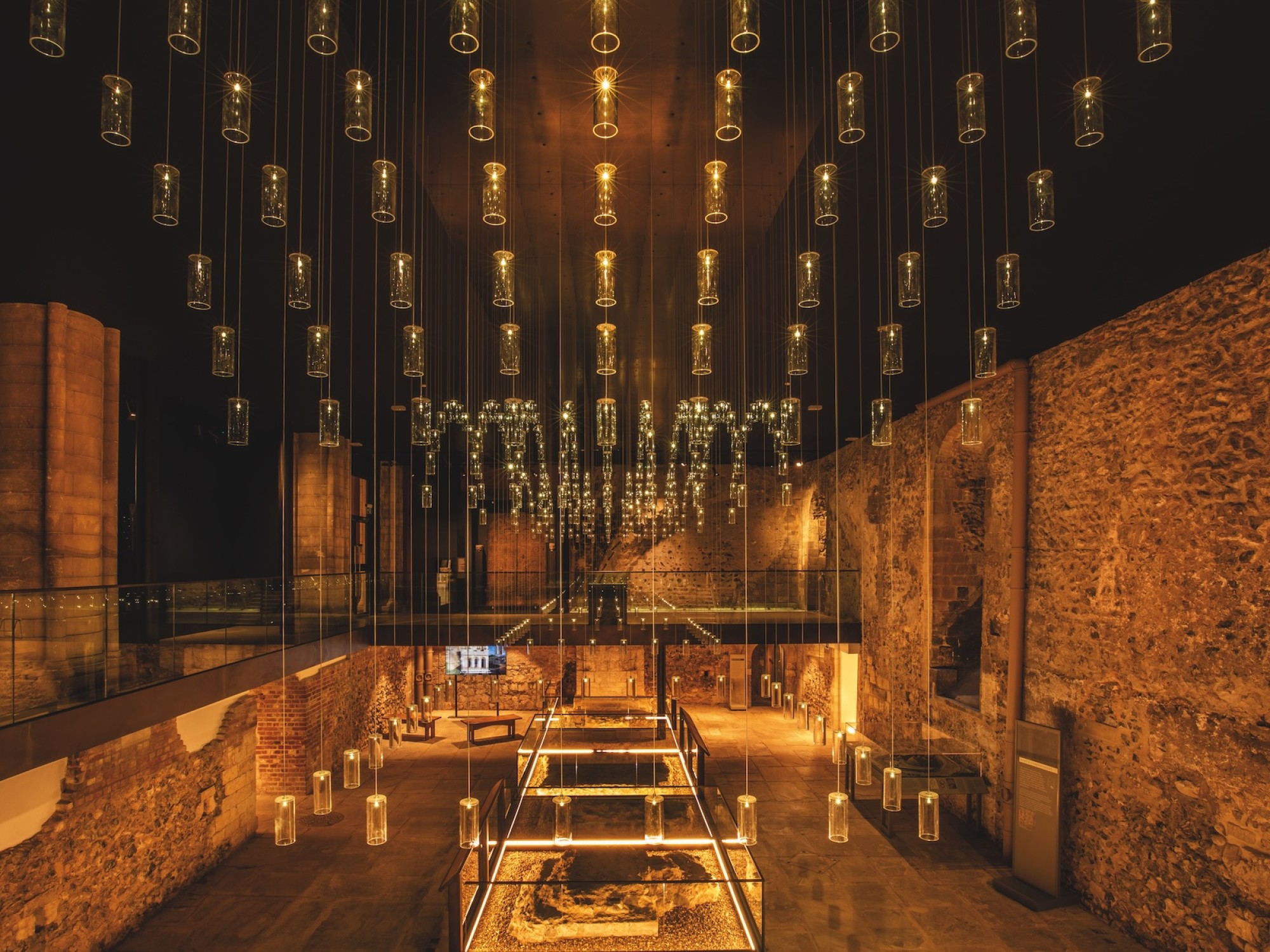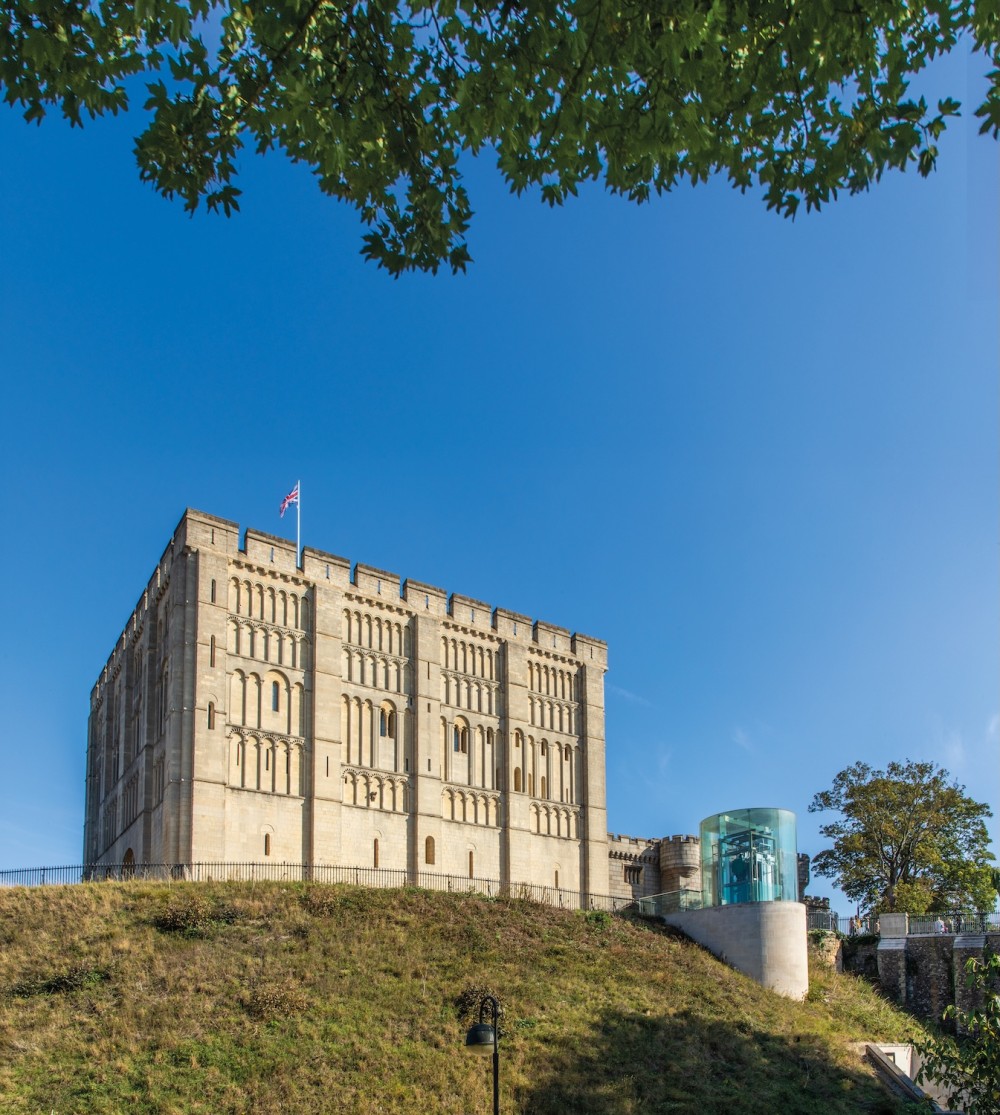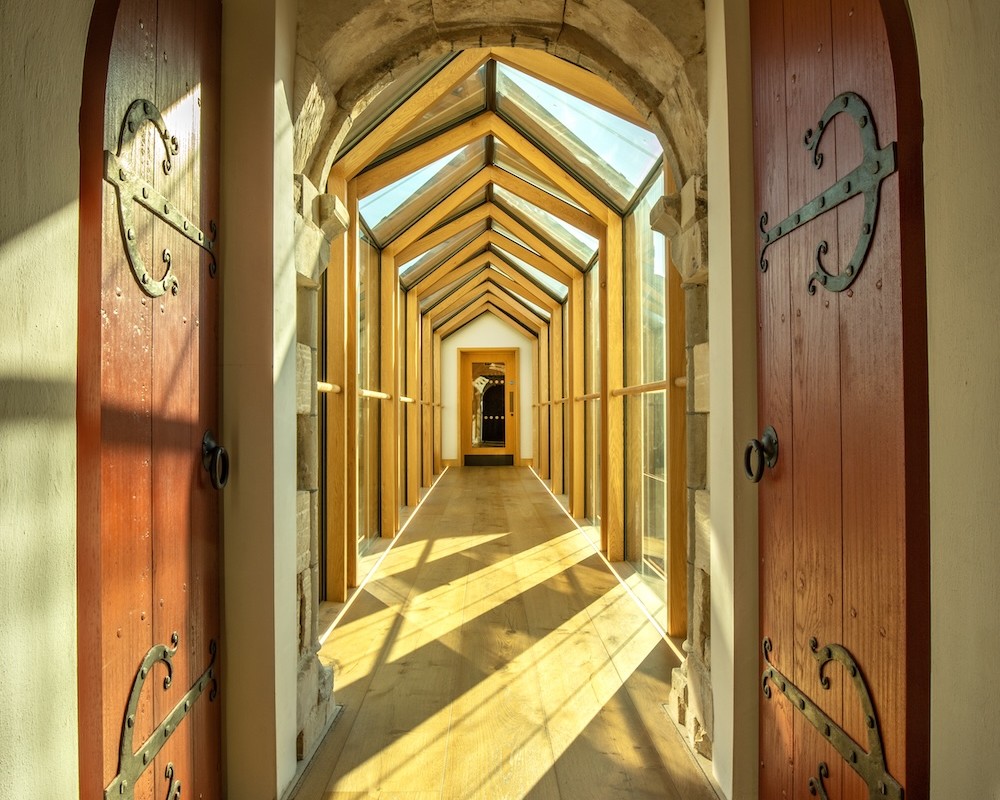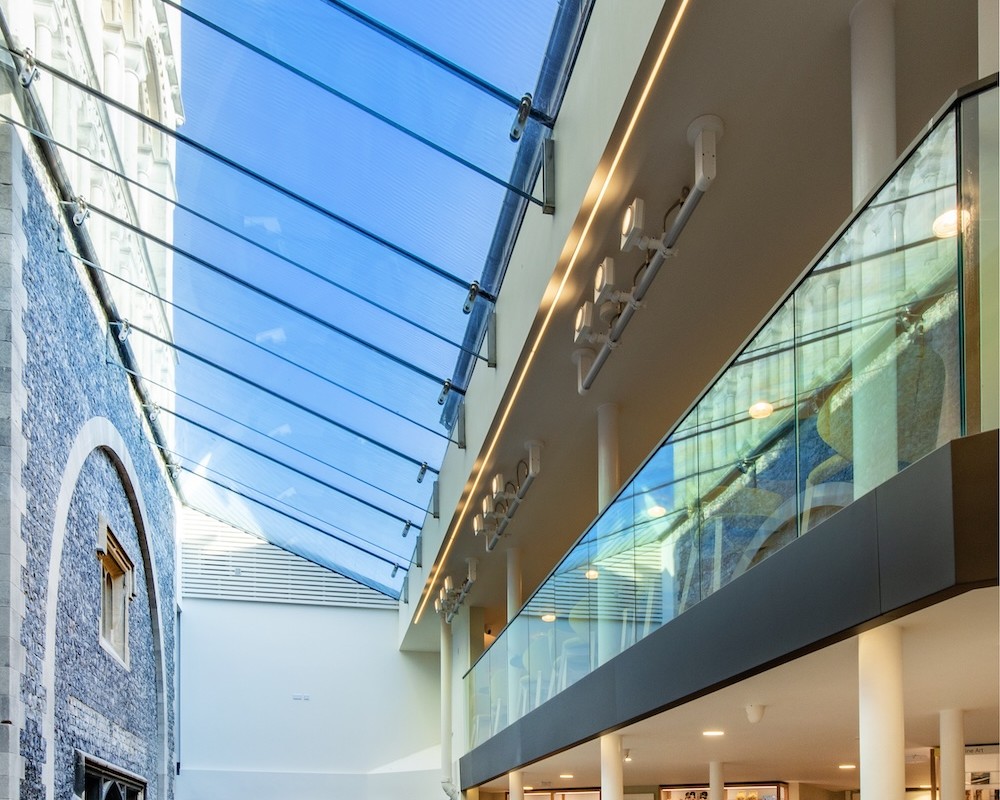
A landmark reborn
Explore 900 years of Norfolk history as Norwich Castle Keep unveils its most ambitious transformation yet…
Norwich Castle’s medieval keep reopened to the public on 7th August 2025, marking the completion of the UK’s largest heritage redevelopment project of the year. Nearly a millennium after its initial construction, this magnificent Royal Palace has been recreated with care and authenticity, offering visitors an immersive journey into the heart of Norman England.
Transformed by a dedicated team of historians, architects, craftspeople and volunteers, the keep now reflects its original medieval layout, complete with historically accurate room designs, vivid visual storytelling and seamless accessibility from basement to battlements.
At the centre of the experience lies the Gallery of Medieval Life – a remarkable exhibition developed in partnership with the British Museum. Spanning the 12th to 16th centuries, this rich material collection is arranged around three defining themes: those who work, pray and fight. Since most medieval people fell into one of these categories, the gallery allows visitors to gain a deeper understanding of the era, combining evocative artefacts, interactive games and audio-visual storytelling to engage all ages with the lives behind the legends.
“Our goal was to give the people of Norfolk a chance to connect with their heritage,” says Dr Simon Thurley, Chairman of the National Heritage Lottery Fund, who provided over £13 million of lottery funding for the project. “I hope local schools will organise trips to the restored keep, inspiring children to experience the story and significance of their county.”
Of the 900 items on display, 50 are on long-term loan from the British Museum, which has worked closely with Norfolk Museums Service for nearly three decades. As only their seventh partnership gallery in England and the largest display of medieval artefacts outside London, it’s a powerful testament to Norfolk’s rich and diverse heritage.
“Our aim was to create an immersive, imaginative and deeply authentic experience,” says Dr Nicholas Cullinan, Director of the British Museum. “This special gallery is the result of years of collaboration and arrives at a time when interest in medieval history is both growing and enduring. Everyone involved has worked side by side - united by a belief in the power of this keep, and of history itself, to inspire, inform and connect.”
“It’s been a privilege to help compile this fascinating collection,” adds Naomi Speakman, a curator at the British Museum. “It showcases a wealth of unique local finds and splendid artefacts that illuminate five centuries of medieval life in a whole new light.”
Among the gallery’s treasures are a seal matrix once used by Henry V to mark documents, a finely carved wooden altarpiece and a gold disk from a monarch’s bird of prey. Intricate jewellery, textiles, tools and weapons offer further insight into craftsmanship and culture, painting a vivid and multifaceted portrait of the era.
For Naomi, it’s the personal items that resonate most, like the delicate ivory bobbin discovered in the castle’s drains and what’s believed to be the medieval equivalent of a compact mirror.
“Upon first glance, its ornate carvings appear to depict a siege, but closer inspection reveals the objects shown are actually flowers, not weapons,” Naomi explains. “I hope visitors will discover the playful, romantic spirit embedded in many of these artefacts and appreciate the human side of history. Medieval life wasn’t just plague, famine and war; medieval people were people, and they had fun.”

While the gallery offers a breathtaking window into the past, it’s the reinstated interiors that bring the keep’s original grandeur to life. Drawing on historical sources and the expertise of local craftspeople, including the team at Holkham Forge, each room has been meticulously curated to reflect the original Norman design.
Accessibility was a cornerstone of the project, with Norwich Castle now standing out as one of the most inclusive heritage sites of its kind in Britain. For the first time in its nine-century history, all five levels of the keep can be reached via a discreetly installed lift. Tactile maps, audio guides and interactive displays support a wide range of needs, while the inspiring layout invites visitors to explore at their own pace.
Following more than a decade of research, the team set out to challenge the common misconception that England’s medieval castles were stark and colourless. Inspired by the Romanesque style, these formidable structures once dazzled with grand arches, sculpted pillars, richly woven textiles and vibrant wall art. The keep’s once-grey interiors now burst with colour and pattern, drawing influence from 12th-century illuminated manuscripts and surviving medieval artefacts. Painted thrones, period dining settings and historically accurate furnishings enhance the experience, inviting visitors to imagine themselves as the King’s most esteemed guests.
Project managers placed authenticity and safety at the heart of their approach, working to restore the keep’s medieval character while respecting the integrity of its 900-year-old structure. Every decision reflected this careful balance, from suspending the volunteer-stitched Norfolk Tapestry on iron hooks inspired by those used for the Bayeux Tapestry to ensuring the leather-clad, medieval-style doors were fire safe.
“It’s designed to be an immersive space rather than an exhibition space,” says Hannah Jackson, a passionate Project Manager. “We wanted to create a setting that felt lived in, not staged. That meant balancing historical accuracy with modern standards.”
Academic researchers drew inspiration from medieval architecture across England, including Coombes Church in Sussex. Renowned for its extravagant wall paintings, this richly decorated site served as a key reference for designers at Norwich Castle, who applied bold red pigment over whitewashed stone. They also adorned bare walls with tapestries depicting prominent medieval themes, from the eternal struggle between good and evil to the biblical story of creation.
The expert team remained steadfast in their commitment to accuracy, researching period materials and selecting colours from a palette limited to just 14 shades. Among the most striking was rose madder, a red derived from the rubia tinctorum plant. Widely cultivated in medieval East Anglia and traded at Norwich’s Madder Market (now home to a thriving local theatre), it adds a bright touch of authenticity to the keep’s interiors
The transformed Norwich Castle Keep now provides a rare opportunity to experience the Royal Palace as it might have appeared under the first three Kings of England. The passionate professionals and volunteers behind the refurbishment have worked tirelessly to preserve the landmark’s astounding legacy, inviting all Norfolk residents and visitors to reconnect with their shared heritage.



